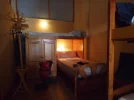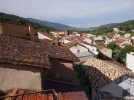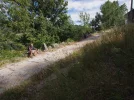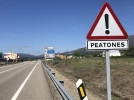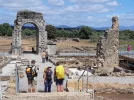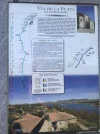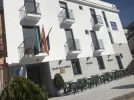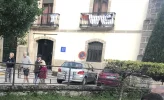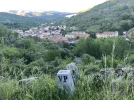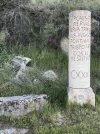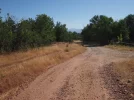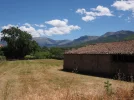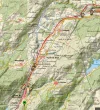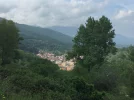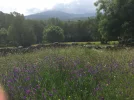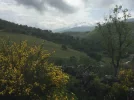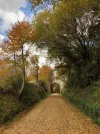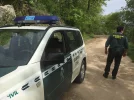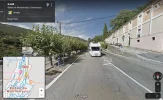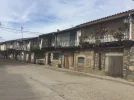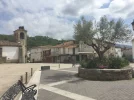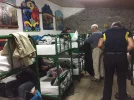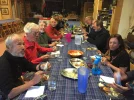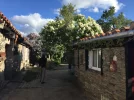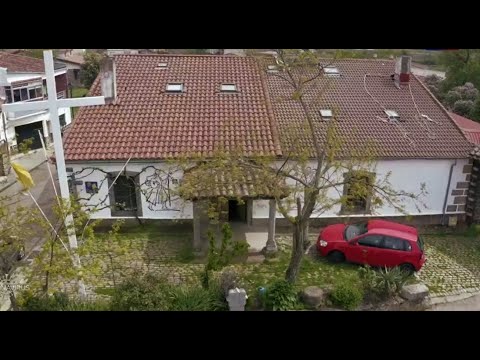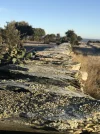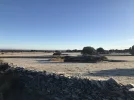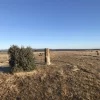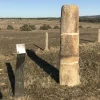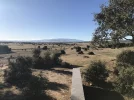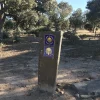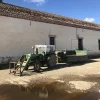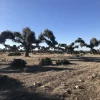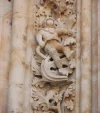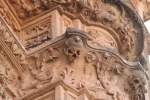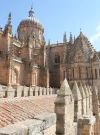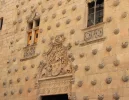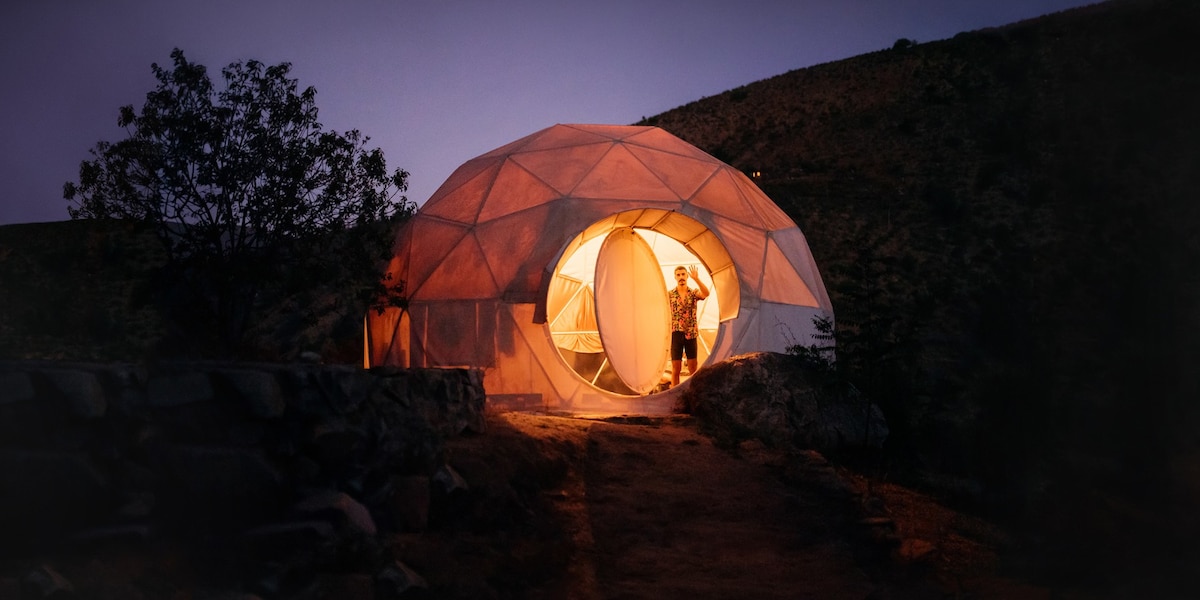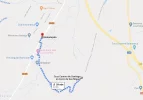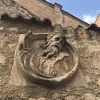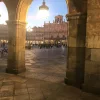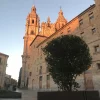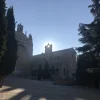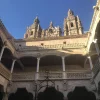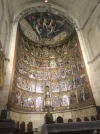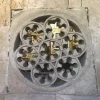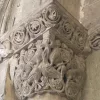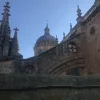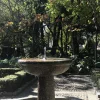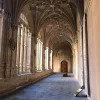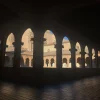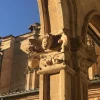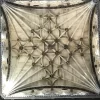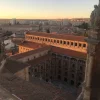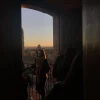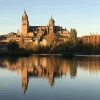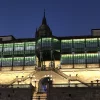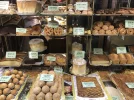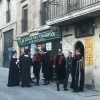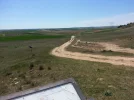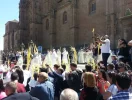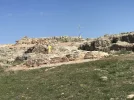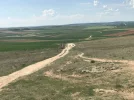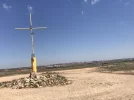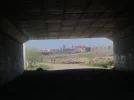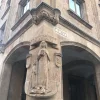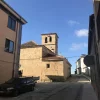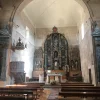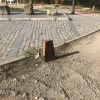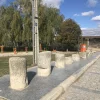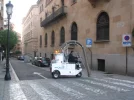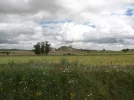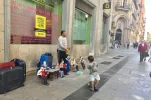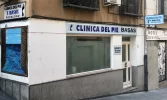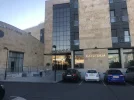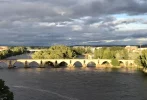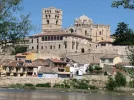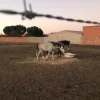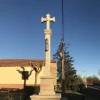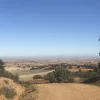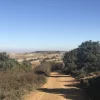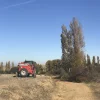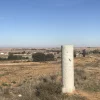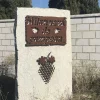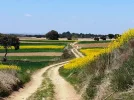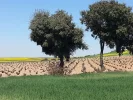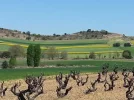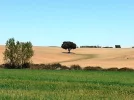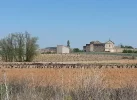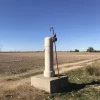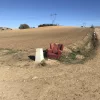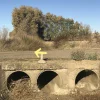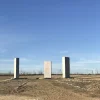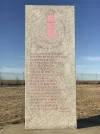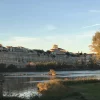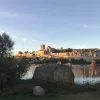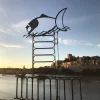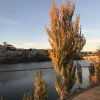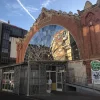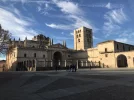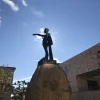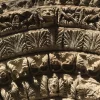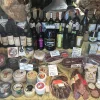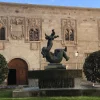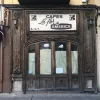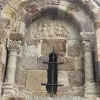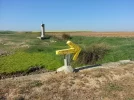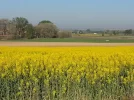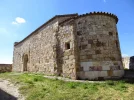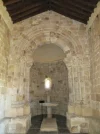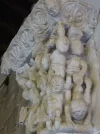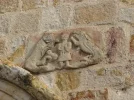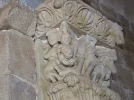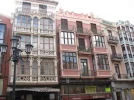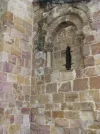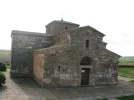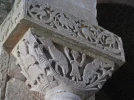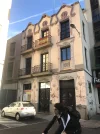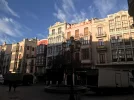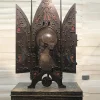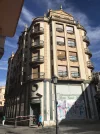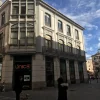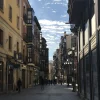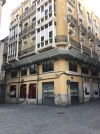Day 40: Villanueva de Campeán to Zamora
The approach into Zamora doesn't seem to involve going through suburbs, and it looks like we arrive straight into town, after crossing the Duero on the Puente de Piedra.
I've yet to walk many caminos, but I think the way into Zamora must to be one of the best entrances to a city on any camino in Spain. Here's my attempt at a ranking. I look to the more experienced walkers to re-arrange or expand this chart (or disagree) from their experience of Frances, Primitivo, Lana, Norte, etc. etc. etc..
Most scenic camino routes into cities:
1. Granada
2. Zamora
3. Santiago de Compostela coming from Finisterre/Muxia
Most scenic camino routes out of cities
1. Córdoba
2. Mérida
3. Santiago de Compostela going to Finisterre/Muxia
Least scenic camino routes in and out of cities
1. Leaving Granada
2. Leaving Salamanca
3. Entering Ourense
The detour to San Marcial is marked with a minor battle of the signs at the decision point. (The sign pointing left promises a bar, shop, hot food ... the one pointing right has cleverly written Zamora as Za with a heart (amor)). As far as I can see, there shouldn't be much difference to the total distance walked whichever way you choose. if you go via San Marcial, I think you might miss the yellow arrow of C Clearly's profile picture... (but I might be wrong - someone else will have to confirm). The yellow arrow on a stick is not exactly a "must see" sight, but it's one of a kind - clever, funny, understated. I wish the same could be said for the excessive, repetitive, modern replicas of Roman milestones with hulking, great, pilgrim staffs attached. When you've seen one, you've seen them all. And when I'd seen my fifth or sixth, l started to view them as a form of pollution... I think they stopped at camino-henge.
Camino-henge
In recent times,
Several years before the dawn of Snapchat
Lived a strange group of people, the pink paint monument builders
No-one knows who they were or what they were doing
But their legacy remains,
Cast into the manufactured stone
(apologies to Spinal Tap)
The monument is starting to crack in places. People whose judgment I respect have told me that they're horrified by the trite inscriptions. It's ostensibly a message of mutual understanding between different faiths, on this road that has seen the movement of so many different people. Given the fact that these people were often being ethnically cleansed or forced to move by war and persecution, it is a delicate topic to cover. Since I didn't labor through the text myself and I don't know whether people from all faiths were involved in its composition, I can't say whether it adequately and appropriately sets out the context for a monument to peace, love, and understanding. That's not to say that I have any problem with peace, love, and understanding.
I noted that the circle that joins the three plinths is labeled "The Promise Curb," which reminded me of a parody of a folk hymn that the music teacher at my school wrote ("Lord, let me be the putty in your window frame"). Five hundred of us sang it with great gusto. I think the chaplain enjoyed it, but the piece didn't get a second performance.
The countryside here is somewhat flatter than before Villanueva, but still quite pleasant. I am sure that it's much prettier when everything is green than in the autumn, when I watched tumbleweed rolling over the fields from the comfort of a relaxing armchair. You might not want to sit in the armchair. I think I heard something under me squeak.
Arriving in Zamora is such a treat. There is a teensy bit of grotty suburb (with one building in particular that surely can't be compliant with any building codes - a structure of quite low quality brick with an upper storey rotated at 45 degrees over the lower storey, with the corners overhanging ...) Once you get past that, you follow a river-side footpath with a fine view of the old city - the castle, cathedral at the front - that takes you all the way to the stone bridge over the Duero. It's a sight to behold on a fine day in the fading afternoon light.
You enter town through a not so prosperous old square, then uphill past the museum of Zamora (excellent), the albergue (also excellent), and the church of San Cipriano (Zamora's oldest), which stands at the entrance to the Plaza de San Cipriano and beyond that the Plaza de Viriato, with a statue of the Roman military leader Viriathus by Eduardo Barrón González - one of two great sculptors from Zamora. Although I did not know Barrón González's name before I visited Zamora, I recognized the replica (in the Museum of Zamora) of his portrayal of
Nero and Seneca. The original is at the Prado. Later learned that the brutal statue of Hernan Cortes in Medellin is another of his works.
EDIT - Done some background reading. The statue of Viriathus dates from 1884. Apparently, the legend is that Viriathus was a Celtiberian, so he had significance as nationalism was becoming a force in Europe. To my uneducated eye it looks to be ahead of its time in terms of style, but I don't really have a. clue.
This is a good reference point to get your bearings. You have about one quarter of the old city to your left (West) and three quarters to your right (East). The modern city continues to the east after that. Most restaurants, shops and hotels (incl. Hostal Chiqui) are to your right (East). Some pretty old streets, the Cathedral, the castle, the park and views over the river are to your left (West).
I have spent the night at the donativo albergue on two occasions. It's excellent - a beautiful old building, volunteer hospitaleras who were absolute angels (but they change every two weeks), a large kitchen and dining area, OK showers, washing machine, and a small yard for drying clothes. Breakfast (tea or coffee, boiled egg, toast, jam etc.) provided. It does not accept reservations and pilgrims may only stay one night. If you've enjoyed staying at albergues on your trip so far, perhaps you should consider it for your last night in town. You are guaranteed to get a place, because you can check in as soon as it opens. You will also have a chance to befriend the pilgrims that you'll meet on the camino the following day. Even if you don't stay, it's worth dropping in to say hello. The hospitaleros might have time to share a few thoughts about the beautiful city that they get to see during the hours that the albergue is closed and they will certainly have the latest information about the road ahead.
I found that the hotels in Zamora were considerably more expensive than accommodation in Salamanca. I spent one night at Chiqui and I considered it to be OK. Very stylish and very central, but quite a small room, and not such a small price.
Zamora is a gourmet town. You'll see this in the food stores - Lots of fresh, local, produce, wines, cheeses, meats. The bakeries have a similar range of sweet and savory pastries to those in Salamanca. I think there are local variations, though, so fill your boots. There's also a beautiful Mercado de Abastos. I have a theory that the best early-morning, chocolate and churros is to be found around the market in many cities. Zamora is no exception. I think there are two cafes right outside the covered market that open as soon as the day breaks.
For dinner, people might point you to El Horno which does a pilgrim menu. It's fine, but there are many other options in town. A good street to explore is the narrow Calle de los Herreros - a little alleyway immediately on one side of the Ayuntamiento. There you'll find a string of tapas bars and restaurants with good food at reasonable prices.
A very fancy place for a glass or three of good quality local wine is the La Oronja Bar & Restaurante on the first floor above ground level in one of Zamora's gorgeous art nouveau buildings, directly across from the beautiful palace (Palacio de los Momos), which now houses the Guardia Civil. In front of the palace is a sculpture of mother and child by Balthazar Lobo - Zamora's other great sculptor. Originally from a village nearby, he lived most of his adult life in exile after the Civil War, but is honored by the city today.
There's only a little easel to advertise La Oronja on the street. You might wonder if it's open. Once you get upstairs you'll discover quite a grand place. At the bar, you can get a decent selection of local wines by the glass and some very classy tapas. I have heard (but not experienced) that the restaurant offers a very good set menu at surprisingly reasonable prices. Reservations are needed.
The quality of the public art in Zamora is, almost without exception a cut above the usual. In addition to Eduardo Barrón González's statue of Vitriato, and various works by Lobo, you'll see bold bronzes of Semana Santa figures, creative wall murals, a handful of very good museums, and pleasant parks and plazas with mature trees and good street furniture ... Cities don't achieve this sort of thing overnight. It takes decades or centuries of careful work to conserve what's worth conserving while building up new cultural capital. I don't know why Zamora managed where other places have failed. As far as I can tell, Zamora has only been very prosperous twice in history - Once in medieval times when it built an unrivaled collection of Romanesque churches, and once again in the early 20th century, when it kitted out the city center with some very fine art nouveau blocks.
EDIT - Well, thinking about it, perhaps the existence of so many churches generated demand for ecclesiastical art, giving rise to an artistic tradition. Perhaps the prominence of the Semana Santa celebrations, with elaborate floats bearing carved figures made a life as a sculptor seem possible. And perhaps a lack of prosperity and an absence of industry is what allowed the old buildings to remain untouched until they were valued. Just a theory.
There's a lot more to say about Zamora, but I think I've probably written everything that I know in other threads that I'll try to dig up. I know that Peregrina2000 will be sharing information about the churches and other cultural sights. I'll probably chime with my favorites too.







